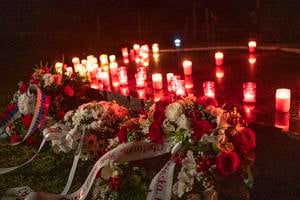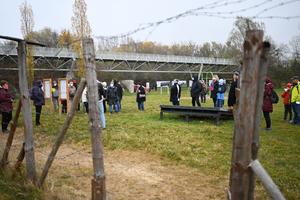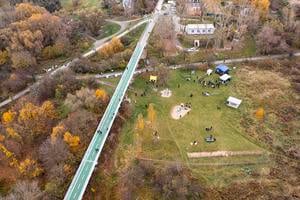The Morava River bank below the Freedom Bridge for cyclists features a small playground for kids, a workout area and some bicycle stands.
Only a replica of the Iron Curtain, the highly surveilled barbed-wired fence that once used to stand at this site, and a black-stone memorial to the people who died trying to cross it, recalls what this place meant to people living here before the 1989 Velvet Revolution toppled the totalitarian regime in former Czechoslovakia. For those who lived in Bratislava's borough of Devínska Nová Ves, the Iron Curtain was not just a Cold War symbol.
Today, the condition of the fence is far from excellent, with lines of barbed wire loosely hanging on leaning beams. Nevertheless, it very well illustrates how determined the regime was to protect the Czechoslovak Socialist Republic from western democracy and prevent its citizens from running away to freedom.
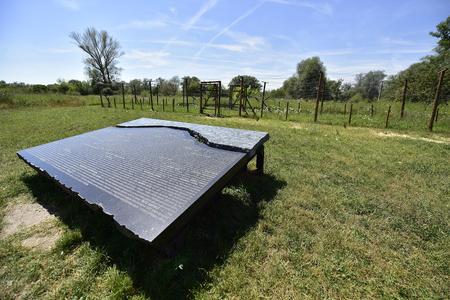
“The entire previous regime was intertwined with such an iron curtain; [the curtain] was in each of us,” said Juraj Štekláč, deputy chairman of the Bratislava Self-Governing Region (BSK), on November 14, during a commemoration of people killed at the Iron Curtain between former Czechoslovakia and Austria in their attempts to flee. “Each of us had their chest wrapped in a piece of barbed wire; as long as you breathe shallowly, everything was alright at first sight. But when you decided to take a deep breath, the sharp edges of the wire penetrated your flesh.”
In their own attempts to take a deep breath, many decided to run the risk and illegally cross the highly guarded border. Devínska Nová Ves and Devín were the places to go for those the regime dubbed border intruders. This was because after climbing over the fence, only a narrow band of land separated them from freedom as the border runs along the centre line of the Danube and Morava Rivers.
Milk delivery men with a ladder
People running from the country searched for holes, either physical or for those in the security system. In response to each attempt the regime learned of, whether successful or not, it improved the fence and tightened the guarding system.
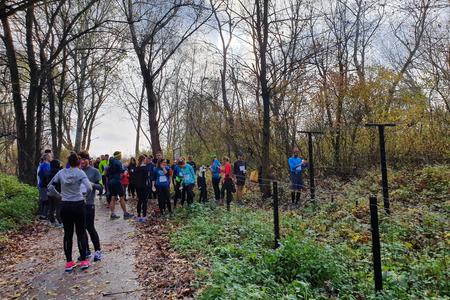
A legendary escape involved a milk delivery truck. The driver and his friend, who delivered milk to grocery shops in Devínska Nová Ves and Devín, possessed very good knowledge of the road flanking the barbed wire. One early September morning in 1980, they pulled the truck up to the fence. They extended a ladder from the truck bed to climb over the first fence, and then used the ladder to climb the second barbed-wire fence.



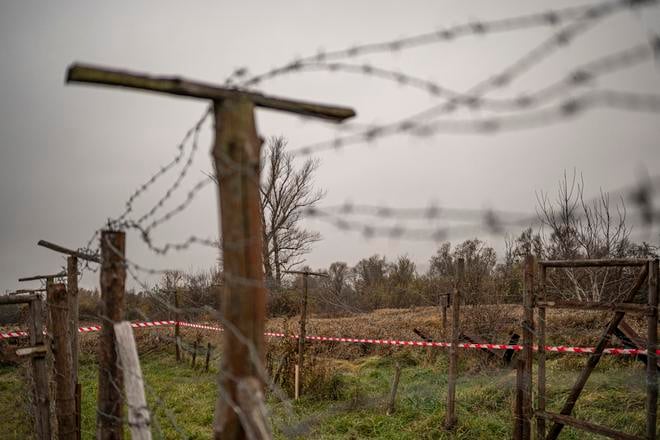 The remnants of the Iron Curtain in Bratislava. (source: Courtesy of BSK)
The remnants of the Iron Curtain in Bratislava. (source: Courtesy of BSK)
